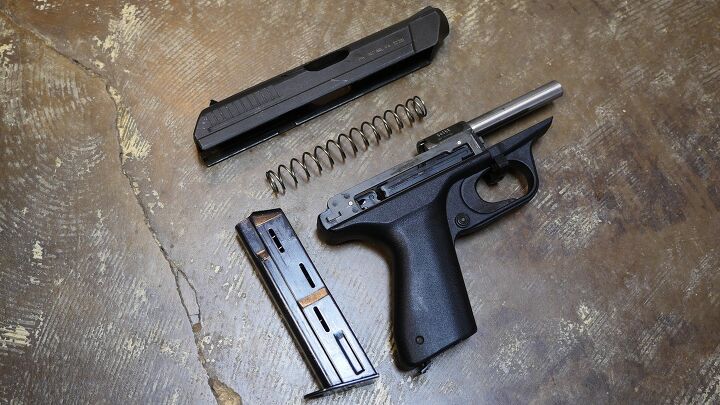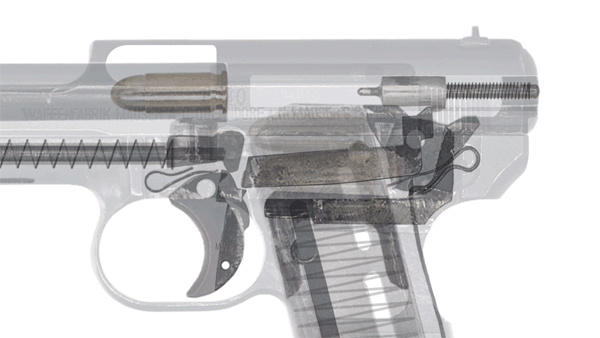The first entry in our coverage of automatic weapon operating mechanisms will be the humble straight blowback method. Conceptually simple, it is one of the most common systems, being applied almost universally to .22 caliber rimfire autoloaders the world over, as well as being very commonly applied to budget centerfire handgun and rifle designs.
The fundamental challenge of an automatic weapon is how to contain the great pressure created from firing a round within the breech, while still providing a means to unload a spent round from the chamber and reload a fresh one rapidly. To solve this, a pure blowback weapon utilizes the Newtonian principle of inertia; that is, of objects in motion or at rest to stay in that condition unless acted upon by an outside force. A heavy breechblock is oriented behind the chamber, supporting the rear of a cartridge. When the firing mechanism ignites the cartridge’s primer, the inertia of the breechblock itself keeps the breech shut long enough for the pressures inside the chamber to drop to safe levels.
- Breechblock: A metallic element that blocks the breech of a weapon; often synonymous with bolt, though not always.
Unlike other forms of blowback that will be discussed later, straight (or “plain”) blowback ignites a round when the breechblock is fully forward against the breech. Only the standing inertia of the breechblock, and to a much less extent the force of the recoil spring, act to seal the breech. Other forms of blowback modify this basic principle by having the cartridge ignite while the breechblock is still moving forward, so that the thrust of the cartridge has to also overcome its forward movement (called “API blowback), and still others force the thrust of the cartridge to act against a mechanical advantage (called “retarded blowback”, also commonly “delayed blowback”). These will both be discussed in the future.
The distinction between straight blowback and API blowback is mostly academic with regards to small arms (although it becomes much more important for autocannons); however it does delineate a neat line between closed-bolt pure blowback designs and open bolt blowback weapons like submachine guns, which generally use the API blowback principle. The distinction between “open” and “closed” bolt will be discussed in another episode.
The advantages of straight blowback operation are that it is extremely simple, extremely inexpensive to make, and generally reliable, durable, and easy to maintain. However, in trade, the mechanism is not well compatible with more powerful, higher pressure rounds, and generally produces higher recoil forces than locked breech systems in the same caliber.
 Your Privacy Choices
Your Privacy Choices

